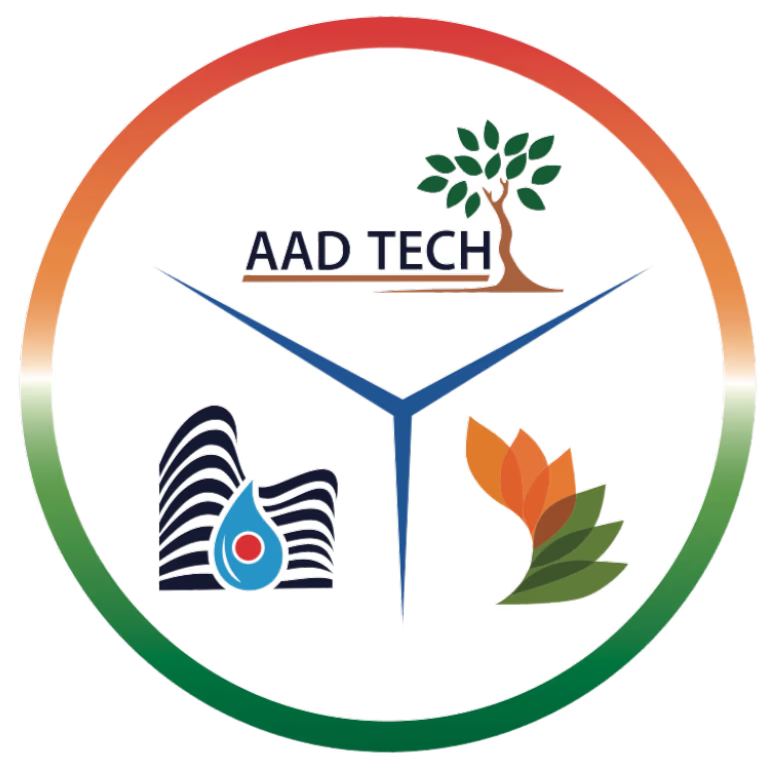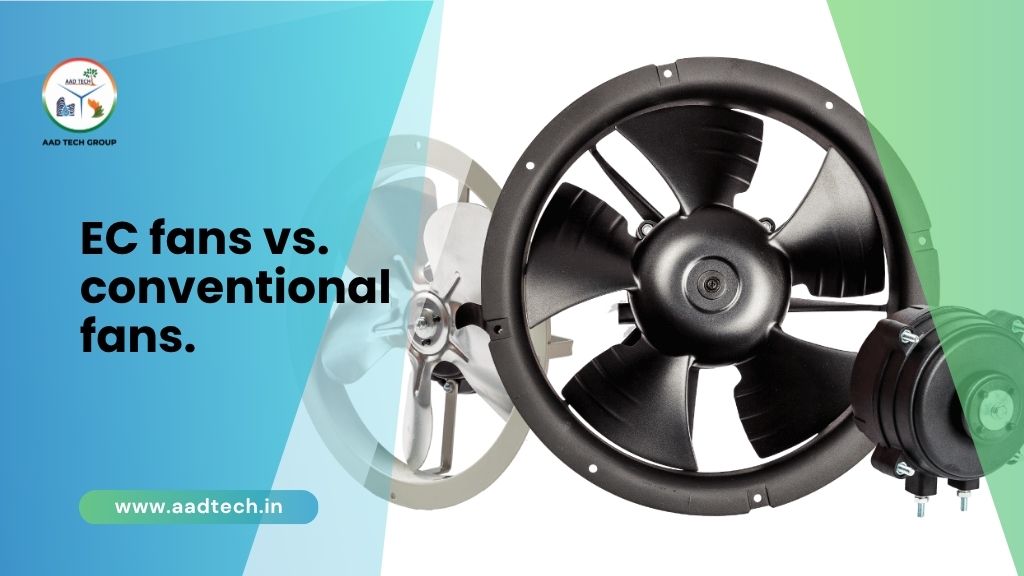In today’s world of energy-conscious design and sustainable engineering, choosing the right fan technology can significantly impact both operational costs and environmental performance. Whether you’re designing a commercial HVAC system, upgrading an industrial ventilation setup, or optimizing cooling in electronics, understanding the difference between conventional fans and Electronically Commutated (EC) fans is essential.
With awareness about power efficiency, smart controls, and long-term reliability, most sectors are making a transition towards cutting-edge solutions offered by companies like AAD TECH India Private Limited, which is India’s first company to specialize in state-of-the-art air movement technology. Having said that, let us explore how conventional fans compare against EC fans and how the latter is gaining popularity in industries.
What Are Conventional Fans?
Old-fashioned fans, usually AC motor powered, have been the norm in the industry for decades. They are induction motors powered and connected to the power supply by variable frequency drives (VFDs) or direct-on-line starters. They are normally controlled in speed mechanically (dampers or pulley systems) or electrically by VFDs.
Features of Conventional Fans:
- Lower capital expenditure
- Well-established and widely available technology
- Fixed or limited variable speed capability
- Increased energy consumption during part-load operation
- Bulky mechanical control systems
While still viable in specific high-volume applications, their energy inefficiencies and limited control systems have made them less attractive with the present dynamic operating conditions.
What Are EC Fans?
Electronically Commutated (EC) fans feature brushless DC motors with embedded electronic circuits for simple interfacing with digital control systems. EC motors combine the efficiency of DC technology and the convenience of AC power input. EC fans provide increased efficiency, reduced noise, and intelligent control functionality.
Key Features of EC Fans:
- Energy saving of 70% compared to conventional fans
- Variable speed control using 0–10V or digital inputs
- Small size with integral motor and controller
- Lower maintenance and longer lifespan
- Lower noise and heat output
These all contribute to EC fans being ideal for HVAC, data centers, industrial air conditioning, and other energy-critical uses.
Why EC Fan Technology Is Gathering Pace in India
India’s power-thirsty sectors, starting from manufacturing to infrastructure are struggling to reduce the use of electricity and achieve the requirements of sustainability. The transition has gained momentum for the use of energy-saving technology like EC fans.
Especially after the Paris Agreement, Nations around the world are focusing on reducing their Energy consumption and Carbon footprint. This is where AAD Tech Group could help them achieve their goals towards a sustainable economy.
As a pioneer firm in the air technology industry, AAD TECH has been at the forefront of installing new fan systems that are able to cope with India’s rugged climatic conditions and industrial demands. Through their customized EC fan solutions, AAD TECH is allowing organizations to maximize airflow, lower their operating costs, and comply with green building standards.
Scenarios Where EC Fans Are Preferable to Conventional Fans
- Commercial/Office Buildings where comfort cooling is required
EC fans enable dynamic airflow control as a function of ambient conditions or occupancy. EC fans are easily integrated with BMS (Building Management Systems) to ensure maximum energy efficiency.
- Data Centers
Since the thermal load fluctuates throughout the day, EC fans on CRAC units and server racks deliver maximum cooling without energy wastage.
- Refrigeration and Cold Storage
EC fans perform well in temperature-critical applications, providing smooth air flow and energy savings and system heat load reduction.
- Cleanrooms and Laboratories
EC fans’ low noise and accurate airflow make them suitable for sterile and noise-critical space.
- Industrial Ventilation and Process manufacturing
EC fans provide better control and reliability in plant and manufacturing operations, reducing maintenance downtime and enhancing environmental control.
Long-Term ROI and Sustainability
While EC fans are more costly to buy in the first place than conventional fans, their TCO (total cost of ownership) is significantly lower. Fewer energy bills, lower maintenance costs, and conformity with international energy standards all amount to considerable long-term savings.
Alongside, as India makes its way towards net-zero targets, such companies that are integrating EC fans into their systems stand in the best position to be benefited by regulatory incentives, ESG standards, and green certifications such as LEED and IGBC.
AAD TECH: Bringing High-Performance EC Fan Solutions
With insight into the industrial shift towards green practice, AAD TECH offers a range of EC fan solutions for HVAC, industrial cooling, electronics, and specialized ventilation uses. With a team rooted in engineering excellence and a commitment to innovation, AAD TECH combines local expertise with global technology trends to deliver efficient, scalable, and intelligent air movement solutions.
By focusing on quality production, R&D, and customer-centric design, AAD TECH is a trusted business partner for customers seeking reliable and future-proof ventilation systems.
| Paramenter | Conventional Fan | Aad Tech System |
| Motor Efficiency | 70–85% | 93–95% |
| Belt Maintenance | Required | Not Required |
| Bearing Maintenance | Required | Not Required |
| Copper Loss | High | Non-Existent |
| Slip Loss | Yes | No |
| Belt and Pulley Losses | Yes | No |
| Blower Weight | Heavy | Light |
| Corrosion Resistance | No | Yes |
| Vibration Pads | Required | Not Required |
| Soft Start | Additional Equipment Required | Built In |
| Motor Heat Loss | Yes | No |
Conclusion
With the foremost emphasis on energy efficiency and intelligent control today, the disadvantages of conventional fans are more apparent than ever. EC fans are not just technological enhancements but a considered investment in performance, sustainability, and economics.
Firms that embrace intelligent fan technology today are not just maximizing their operating efficiency but are also stepping towards a greener tomorrow. With players like AAD TECH spearheading the revolution of EC fan solutions in India, it has become easier and more necessary than ever before to migrate from conventional to EC fans.


